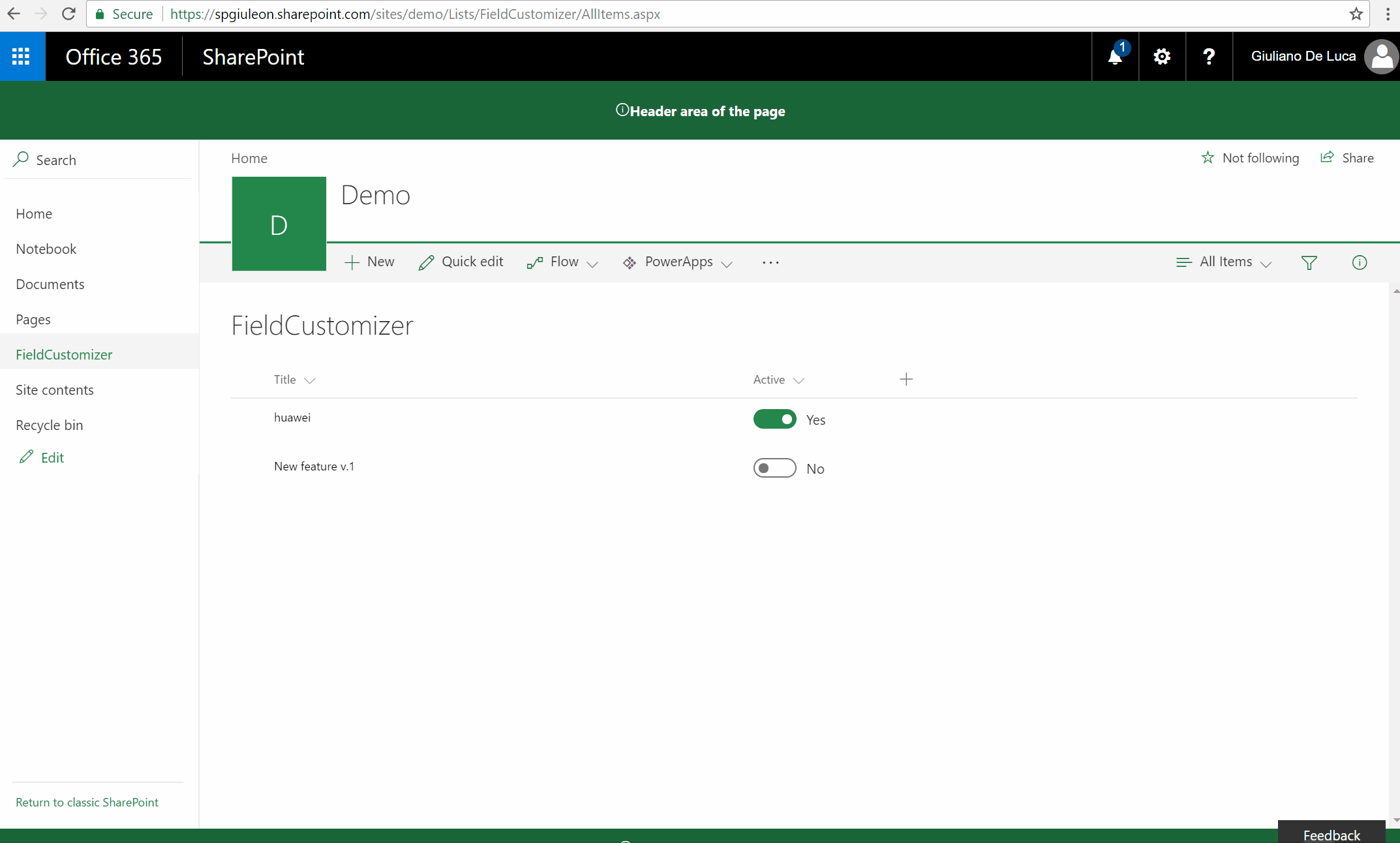|
import * as React from 'react'; |
|
import * as ReactDOM from 'react-dom'; |
|
|
|
import { Log } from '@microsoft/sp-core-library'; |
|
import { override } from '@microsoft/decorators'; |
|
import { |
|
CellFormatter, |
|
BaseFieldCustomizer, |
|
IFieldCustomizerCellEventParameters |
|
} from '@microsoft/sp-listview-extensibility'; |
|
import { SPPermission } from "@microsoft/sp-page-context"; |
|
import pnp, { List, ItemUpdateResult, Item } from 'sp-pnp-js'; |
|
|
|
import * as strings from 'toggleStrings'; |
|
import Toggle from './components/Toggle'; |
|
import { IToggleProps } from './components/IToggleProps' |
|
|
|
/** |
|
* If your field customizer uses the ClientSideComponentProperties JSON input, |
|
* it will be deserialized into the BaseExtension.properties object. |
|
* You can define an interface to describe it. |
|
*/ |
|
export interface IToggleProperties { |
|
// This is an example; replace with your own property |
|
sampleText?: string; |
|
} |
|
|
|
const LOG_SOURCE: string = 'ToggleFieldCustomizer'; |
|
|
|
export default class ToggleFieldCustomizer |
|
extends BaseFieldCustomizer<IToggleProperties> { |
|
|
|
@override |
|
public onInit(): Promise<void> { |
|
// Add your custom initialization to this method. The framework will wait |
|
// for the returned promise to resolve before firing any BaseFieldCustomizer events. |
|
Log.info(LOG_SOURCE, 'Activated ToggleFieldCustomizer with properties:'); |
|
Log.info(LOG_SOURCE, JSON.stringify(this.properties, undefined, 2)); |
|
Log.info(LOG_SOURCE, `The following string should be equal: "Toggle" and "${strings.Title}"`); |
|
return Promise.resolve<void>(); |
|
} |
|
|
|
@override |
|
public onRenderCell(event: IFieldCustomizerCellEventParameters): void { |
|
// Use this method to perform your custom cell rendering. The CellFormatter is a utility |
|
// that you can use to convert the cellValue to a text string. |
|
const value: string = event.cellValue; |
|
const id: string = event.row.getValueByName('ID').toString(); |
|
const hasPermissions: boolean = this.context.pageContext.list.permissions.hasPermission(SPPermission.editListItems); |
|
|
|
const toggle: React.ReactElement<{}> = |
|
React.createElement(Toggle, { checked: value, id: id, disabled: !hasPermissions, onChanged: this.onToggleValueChanged.bind(this) } as IToggleProps); |
|
|
|
ReactDOM.render(toggle, event.cellDiv); |
|
|
|
} |
|
|
|
@override |
|
public onDisposeCell(event: IFieldCustomizerCellEventParameters): void { |
|
// This method should be used to free any resources that were allocated during rendering. |
|
// For example, if your onRenderCell() called ReactDOM.render(), then you should |
|
// call ReactDOM.unmountComponentAtNode() here. |
|
ReactDOM.unmountComponentAtNode(event.cellDiv); |
|
super.onDisposeCell(event); |
|
} |
|
|
|
private onToggleValueChanged(value: boolean, id: string): void { |
|
|
|
let etag: string = undefined; |
|
pnp.sp.web.lists.getByTitle(this.context.pageContext.list.title).items.getById(parseInt(id)).get(undefined, { |
|
headers: { |
|
'Accept': 'application/json;odata=minimalmetadata' |
|
} |
|
}) |
|
.then((item: Item): Promise<any> => { |
|
etag = item["odata.etag"]; |
|
return Promise.resolve((item as any) as any); |
|
}) |
|
.then((item: any): Promise<ItemUpdateResult> => { |
|
let updateObj: any = {}; |
|
updateObj[this.context.field.internalName] = value; |
|
return pnp.sp.web.lists.getByTitle(this.context.pageContext.list.title) |
|
.items.getById(parseInt(id)).update(updateObj, etag); |
|
}) |
|
.then((result: ItemUpdateResult): void => { |
|
console.log(`Item with ID: ${id} successfully updated`); |
|
}, (error: any): void => { |
|
console.log('Loading latest item failed with error: ' + error); |
|
}); |
|
} |
|
} |










